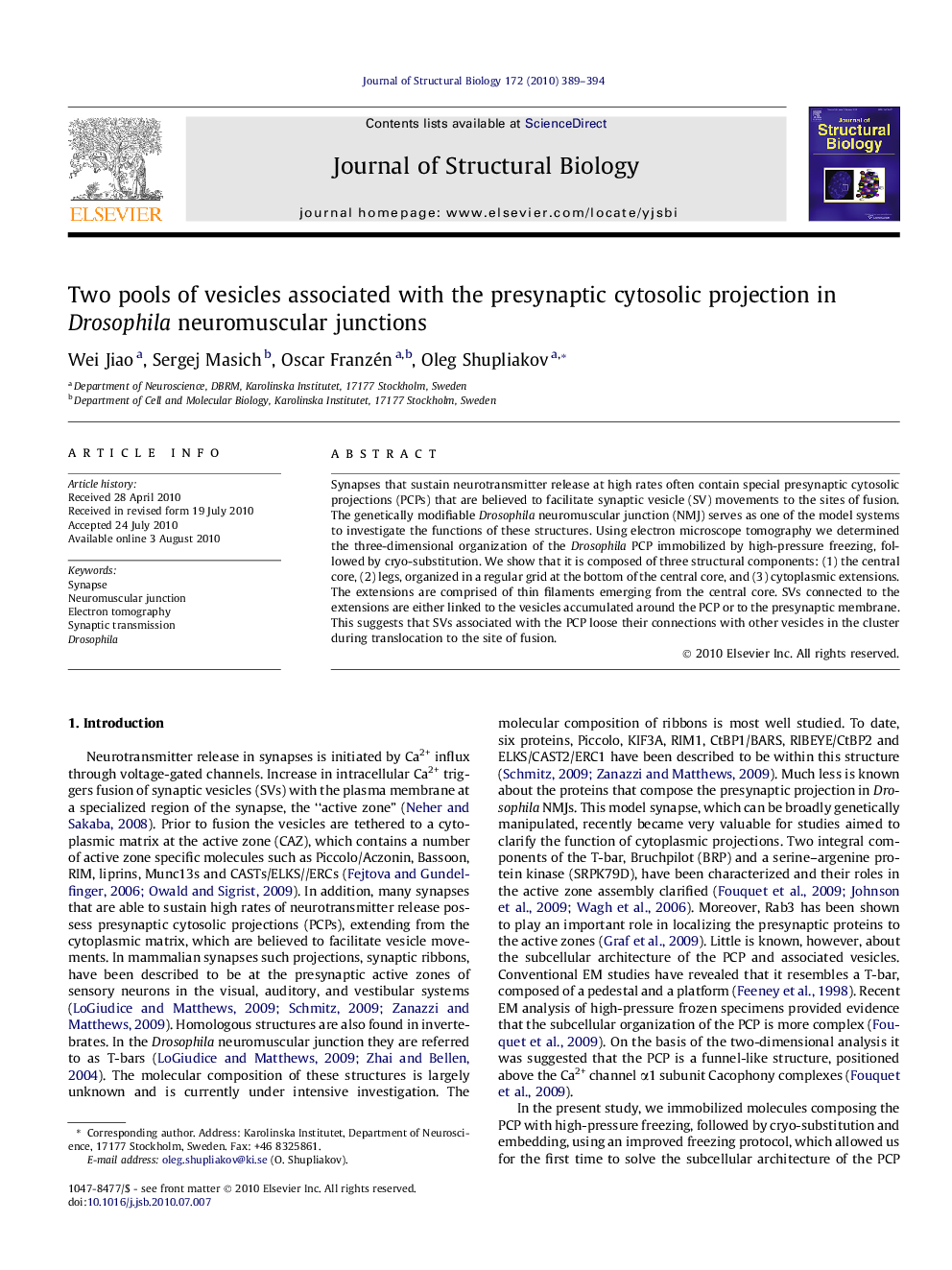| Article ID | Journal | Published Year | Pages | File Type |
|---|---|---|---|---|
| 5914962 | Journal of Structural Biology | 2010 | 6 Pages |
Synapses that sustain neurotransmitter release at high rates often contain special presynaptic cytosolic projections (PCPs) that are believed to facilitate synaptic vesicle (SV) movements to the sites of fusion. The genetically modifiable Drosophila neuromuscular junction (NMJ) serves as one of the model systems to investigate the functions of these structures. Using electron microscope tomography we determined the three-dimensional organization of the Drosophila PCP immobilized by high-pressure freezing, followed by cryo-substitution. We show that it is composed of three structural components: (1) the central core, (2) legs, organized in a regular grid at the bottom of the central core, and (3) cytoplasmic extensions. The extensions are comprised of thin filaments emerging from the central core. SVs connected to the extensions are either linked to the vesicles accumulated around the PCP or to the presynaptic membrane. This suggests that SVs associated with the PCP loose their connections with other vesicles in the cluster during translocation to the site of fusion.
